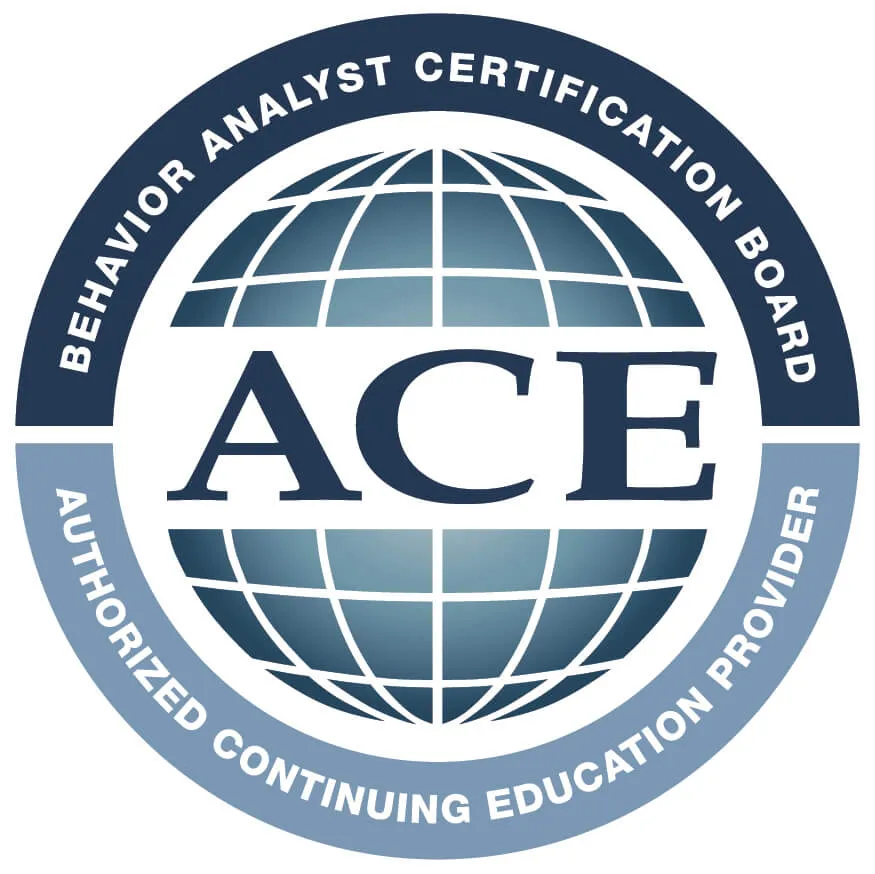ABA Therapy for Autism Development Centers
Exploring ABA Therapy and Its Place in Autism Development Centers
ABA Therapy for Autism Development Centers
Understanding the Role of ABA Therapy
Applied Behavior Analysis (ABA) therapy has become a cornerstone for treating children with Autism Spectrum Disorder (ASD) in development centers. Rooted in the science of learning and behavior, ABA therapy aims to enhance language, social, and adaptive skills while reducing problem behaviors, making it an essential resource for caregivers and professionals seeking supportive interventions. This article delves into the fundamentals of ABA therapy, its methodologies, and the effectiveness that informs its widespread adoption.
What is ABA Therapy?

Basics of ABA Therapy
ABA therapy, or Applied Behavior Analysis, is a treatment rooted in the science of learning and behavior. Its primary focus is to enhance helpful behaviors while minimizing harmful ones. This approach is particularly beneficial for children on the autism spectrum. By utilizing techniques grounded in positive reinforcement, ABA therapy encourages desired behaviors and helps in learning essential life skills.
History and Principles of ABA Therapy
Developed in the 1960s, ABA therapy has evolved significantly. Its core principles involve breaking down complex skills into manageable subcomponents for easier mastery. This structured approach ensures that children can gradually build upon their learning achievements. Techniques like Discrete Trial Training (DTT) and Natural Environment Training (NET) are commonly integrated to provide a comprehensive learning experience tailored to each child's unique needs.
Benefits of ABA Therapy for Children with Autism
ABA therapy offers numerous benefits for children with autism. Research consistently demonstrates improvements across various developmental areas, including communication, social skills, and academic performance. Intensive ABA programs, often involving 25 to 40 hours of therapy per week over 1 to 3 years, have been shown to foster significant progress. With the guidance of Board Certified Behavior Analysts (BCBAs) and the involvement of families, children are empowered to achieve better outcomes, leading to a higher overall quality of life.
Methods and Techniques: DTT and NET

What techniques are used in ABA therapy?
ABA therapy employs a variety of techniques, notably Discrete Trial Training (DTT) and Natural Environment Training (NET). Each method plays a vital role in creating a comprehensive and effective learning experience for children with autism.
Structured Techniques: Discrete Trial Training (DTT)
- Breakdown of Skills: DTT involves breaking down complex skills into smaller, manageable components. This method uses repetition to systematically teach each part until mastery is achieved.
- Environment: The structured environment of DTT helps minimize distractions, allowing for focused learning sessions.
- Successes: Praise and rewards are given for correct responses, enhancing motivation and supporting positive reinforcement.
Natural Techniques: Natural Environment Training (NET)
- Real-Life Application: NET emphasizes teaching skills in natural, everyday contexts. This helps children understand and apply what they learn in real-world scenarios.
- Spontaneous Learning: It encourages learning through everyday interactions and play, making skills more relevant and easily transferable.
Why both methods are effective in ABA programs
The integration of DTT and NET allows for a well-rounded approach to skill development. By using structured methods to teach foundational skills alongside opportunities for spontaneous application in natural settings, children benefit from varied learning experiences.
| Technique | Method Description | Benefits |
|---|---|---|
| Discrete Trial Training (DTT) | Structured lessons focusing on specific skill components | Enhances mastery through repetition; minimizes distractions |
| Natural Environment Training (NET) | Learning through real-life and play-based situations | Promotes generalization of skills to everyday life |
This balanced approach not only fosters effective learning but also supports the child's confidence in those skills outside of formal therapy sessions.
The Role of Positive Reinforcement

Importance of Positive Reinforcement in ABA
Positive reinforcement is fundamental to Applied Behavior Analysis (ABA) therapy. Its primary aim is to promote desirable behaviors by rewarding them, which increases the likelihood of these behaviors being repeated. This approach transforms learning into a constructive experience, not only for children on the autism spectrum but also for their families and educators.
By recognizing and reinforcing positive actions, children learn that their efforts are valued, leading to greater engagement and motivation in various activities. It also plays a crucial role in decreasing problematic behaviors, as children begin to replace those with more appropriate actions which are positively reinforced.
How Positive Reinforcement is Applied
In ABA therapy, positive reinforcement can take many forms, including verbal praise, tokens, privileges, or tangible rewards.
A practical example of this might look like:
| Reinforcement Type | Description | Application Scenario |
|---|---|---|
| Verbal Praise | Simple acknowledgment of effort | "Great job putting your toys away!" |
| Tokens | Earnable system for rewards | Accumulate tokens for a larger reward after achieving specific goals |
| Privileges | Special activities or choices | Allowing extra playtime for completing tasks |
| Tangible Rewards | Physical items or treats | Giving a small toy for mastering a new skill |
By implementing varied reinforcement strategies consistently, ABA therapy maximizes the effectiveness of learning and behavior change, ensuring that children feel supported in their growth.
Effectiveness of ABA Therapy

Evidential Support for ABA
Applied Behavior Analysis (ABA) therapy is recognized as the most effective treatment for autism spectrum disorder (ASD). This recognition is supported by extensive research and endorsements from reputable organizations such as the US Surgeon General and the American Psychological Association. Studies have consistently shown that ABA can lead to significant improvements in essential life skills, such as communication, social interaction, and daily living tasks for children with autism.
The principles of ABA therapy are steeped in evidence-based practices, which have been validated since the therapy's inception in the 1960s. Recent findings reveal that children who undergo intensive ABA therapy—typically 25 to 40 hours a week for one to three years—often showcase marked enhancements in their social and cognitive abilities.
Success Stories and Research Findings
The effectiveness of ABA is not only theoretical but also practical, with numerous documented success stories highlighting children making substantial progress. Positive reinforcement is central to ABA methodologies, which encourages children to repeat desired behaviors, ultimately leading to lasting behavioral change.
ABA therapy employs various techniques, including structured Discrete Trial Training (DTT) and Natural Environment Training (NET). These methods are customized by Board Certified Behavior Analysts (BCBAs), ensuring that interventions resonate with each child’s unique strengths and interests. This personalized approach, coupled with consistent family involvement, significantly boosts the retention of learned skills, setting the stage for long-term developmental success.
Customized Care in ABA Therapy

Personalization of ABA Programs
One of the standout features of Applied Behavior Analysis (ABA) therapy is its ability to be tailored to the unique needs of each child. Customized care ensures that therapy is not a one-size-fits-all approach; rather, it's a thoughtfully designed program that aligns with the child's specific strengths, interests, and challenges.
Every ABA plan starts with a comprehensive assessment, which helps to identify individual goals and objectives. This personalization fosters engagement and effectiveness in therapy because children are more likely to respond positively when tasks are relevant to their lives.
Role of BCBAs in Creating Tailored Plans
Board Certified Behavior Analysts (BCBAs) play a pivotal role in the personalization process of ABA therapy. They are responsible for designing individualized intervention programs and monitoring progress over time. Their expertise ensures that each child's therapy plan is continually adjusted to reflect ongoing developments and changing needs.
Involving families in this process is critical, as caregivers receive training and tools to reinforce strategies at home, leading to greater skill retention and more effective generalization of learned behaviors.
Overview of Tailored ABA Plans
| Aspect | Description | Impact |
|---|---|---|
| Assessment Approach | Comprehensive evaluations for individual needs | Increases engagement and relevance |
| BCBA Involvement | Design, monitor, and adjust therapy plans | Ensures ongoing effectiveness and adaptability |
| Family Involvement | Training and support for caregivers | Enhances retention and generalization |
This model of therapy builds a strong foundation for successful outcomes, allowing children with autism to thrive in various aspects of life.
Family Involvement and Support
Importance of family in ABA therapy
Family involvement plays a crucial role in the success of Applied Behavior Analysis (ABA) therapy. It not only empowers families with knowledge but also provides essential tools to support their child effectively. Engaging family members in the therapeutic process ensures consistency in applying ABA techniques, allowing skills learned in therapy sessions to generalize to various settings, such as home and community.
How to support ABA techniques at home
To support ABA techniques at home, families can take the following steps:
- Regular Communication: Maintain ongoing discussions with Board Certified Behavior Analysts (BCBAs) about strategies and outcomes, enabling families to be informed and engaged.
- Consistent Reinforcement: Apply reward systems to reinforce desired behaviors that are being targeted in therapy, ensuring continuity and enhancing skill retention.
- Practice Skills: Use everyday situations to practice newly acquired skills, such as communication and social interaction, fostering improvements in natural environments.
- Incorporate Fun: Engage in enjoyable activities that require cooperation and communication to make learning fun, reinforcing the positive aspects of ABA therapy.
With dedicated family support, children with autism can experience significant improvements in their developmental journey.
Potential Concerns and Controversies
Criticisms and Support for ABA
Applied Behavior Analysis (ABA) therapy has garnered both support and criticism since its inception. Critics argue that older models of ABA employed punitive techniques, which could potentially harm children by enforcing compliance and suppressing individuality. They caution that these practices might impose neurotypical standards on autistic individuals, risking emotional distress and issues such as low self-esteem or even post-traumatic stress disorder (PTSD).
On the other hand, proponents of modern ABA emphasize its evolution into a more compassionate practice, focusing on positive reinforcement and tailored interventions. They highlight that contemporary ABA promotes the learning of new skills while respecting the unique differences of each child.
How Modern ABA Differs from Earlier Practices
Recent developments in ABA therapy have made it more adaptable and supportive compared to earlier methods. While traditional ABA might have been rigid and behavioral-focused, modern approaches are deeply infused with individualized strategies that prioritize the child’s overall well-being.
For example, the use of techniques like Discrete Trial Training (DTT) and Natural Environment Training (NET) allows therapists to teach skills in more diverse and real-life situations. Additionally, Board Certified Behavior Analysts (BCBAs) now design personalized therapy plans that align with each child's strengths and needs.
Is ABA Therapy Harmful?
The question of whether ABA therapy is harmful is complex, as it has both advocates and critics. While ABA therapy is designed to teach skills and reduce problematic behaviors in children with autism, some argue that its earlier forms included punitive measures that can be detrimental. Critics express concern that the therapy may pressure autistic individuals to conform to neurotypical norms, potentially leading to emotional distress, low self-esteem, and even PTSD symptoms. Proponents, however, claim that modern ABA practices focus on positive reinforcement and individualized approaches that prioritize the child's strengths. Ultimately, the effectiveness and appropriateness of ABA therapy can vary significantly depending on the individual and the specific implementation of the therapy.
Comparing ABA and Developmental Therapy
What distinguishes ABA therapy from developmental therapy?
ABA therapy, or Applied Behavior Analysis, is rooted in the science of behavior and learning. It predominantly focuses on modifying behaviors through structured methods, notably positive reinforcement techniques. This approach encourages desirable behaviors by rewarding children for appropriate actions, reinforcing the likelihood of these behaviors being repeated in the future. It is a systematic process aimed at achieving specific targets, such as improving communication, social skills, and reducing problematic behaviors.
On the other hand, developmental therapy takes a broader perspective, concentrating on a child’s natural growth and overall emotional development. It incorporates theories surrounding cognitive development, like those of Piaget, to foster intrinsic motivation. Rather than emphasizing structured goals, developmental therapy prioritizes supporting the child’s individual learning style and natural experiences, promoting a more holistic approach to development.
The methods of these two types of therapy also differ significantly. While ABA is more structured, with specific protocols to follow, developmental therapy allows for flexibility and adaptability in response to a child's unique emotional and developmental needs.
Which therapy might suit different needs?
The choice between ABA and developmental therapy may depend on various individual factors, including the child's specific behavior needs and learning style.
- ABA therapy is often recommended for children who need direct behavior modification, particularly those on the autism spectrum who may benefit from structured learning environments and specific behavioral goals.
- Developmental therapy might be more suitable for children who thrive on natural learning experiences and whose development could benefit from a more cohesive, less rigid framework, focusing on emotional growth and social interactions.
Ultimately, consulting with professionals familiar with both therapies can help families make an informed decision based on their child’s unique profile and needs.
ABA Therapy in Developmental Settings
Application of ABA in centers
ABA therapy is widely implemented in various developmental settings, particularly in centers dedicated to supporting children with autism spectrum disorder (ASD). In these centers, Board Certified Behavior Analysts (BCBAs) develop personalized therapy plans tailored to each child's unique needs. This may involve structured activities and the use of both Discrete Trial Training (DTT) and Natural Environment Training (NET) to facilitate learning.
Intensive ABA sessions typically last between 25 to 40 hours a week for 1 to 3 years, focusing on enhancing communication, social skills, and daily living functions. Parents and caregivers are encouraged to participate, helping to reinforce skills in home and community settings. The integration of family involvement into the program ensures greater consistency, resulting in more effective skill retention and generalization.
The role of structured environments
Creating a structured environment in ABA centers plays a critical role in reducing anxiety and enhancing the learning experience for children on the autism spectrum. A well-organized setting minimizes distractions, allowing children to focus better on their tasks.
Professionally trained staff, including BCBAs and Registered Behavior Technicians (RBTs), maintain a supportive atmosphere that focuses on positive reinforcement strategies. This customized approach fosters a nurturing environment, enabling children to thrive and promoting lasting behavioral changes.
Getting Started with ABA Therapy
Initial Steps to Enroll in ABA Programs
Starting ABA therapy generally involves a few clear steps. First, parents or guardians should consult with a healthcare professional, such as a pediatrician or a psychologist, who can provide a diagnosis of autism spectrum disorder (ASD) and recommend ABA therapy as a suitable intervention. Afterward, families can research accredited ABA service providers, checking their qualifications and reputation.
Once a provider is selected, an initial assessment is typically conducted. This assessment helps in understanding the child’s specific needs and setting clear goals for the therapy.
Components of an Effective ABA Therapy Program
An effective ABA program involves several essential components:
- Individualized Treatment Plan: Board Certified Behavior Analysts (BCBAs) create tailored plans that reflect the child’s unique strengths, challenges, and interests.
- Positive Reinforcement: This cornerstone of ABA therapy rewards beneficial behaviors to promote positive changes, helping children learn and retain new skills.
- Family Involvement: Family training and support ensure that techniques are consistently applied at home, further reinforcing learning.
- Structured Environment: Organized settings reduce anxiety and provide a conducive atmosphere for learning, critical for developing various skills such as communication and social interaction.
In summary, enrolling in ABA therapy involves careful planning and selection of a qualified provider to ensure effective outcomes.
A Comprehensive Approach to Autism Care
ABA therapy stands as a critical component in the care and development of children within autism centers. By focusing on tailored interventions that amplify strengths and address challenges, numerous families and care professionals are realizing transformative outcomes. Understanding ABA therapy's methodologies, the significance of family involvement, and confronting its debates provides a comprehensive view toward making informed decisions. As a well-researched and adaptive approach, engaging with ABA therapy offers hope and practical support for enhancing the quality of life for children with autism.
References
- Applied Behavior Analysis (ABA) | Autism Speaks
- ABA & Autism - Center for Autism and Related Disorders (CARD®)
- How ABA Therapy Supports Child Development Centers?
- ABA Therapy's Role in Autism Treatment Centers
- Why Change Is Hard for Children With Autism
- Treatment Options - Autism Science Foundation
- Beware of Non-Evidence-Based Treatments








